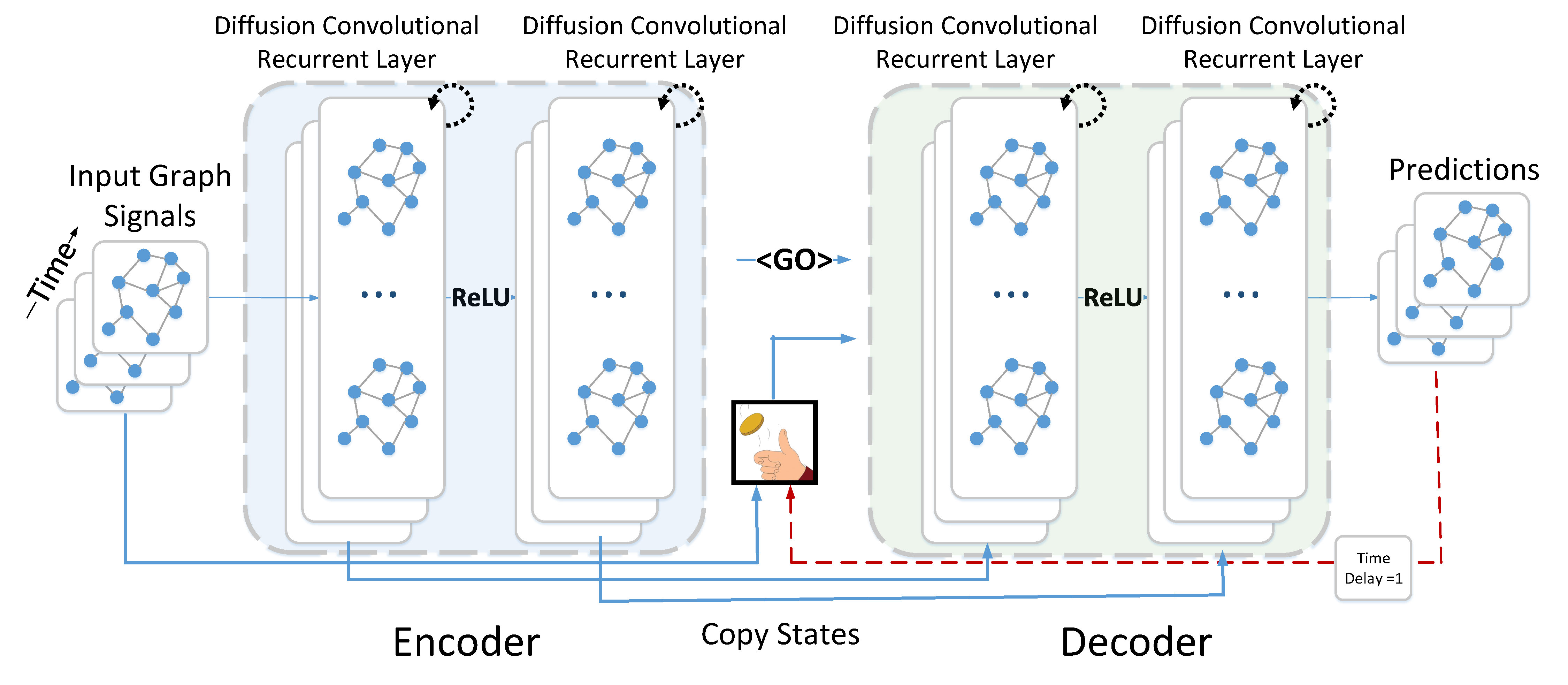DCRNN主要是用来进行区域范围的交通速度预测的模型。首先需要获取到区域范围内的传感器数据,并使用k-way算法对其进行建模分区;再利用历史交通数据对各个分区进行学习训练,分区重叠的节点会进行优化;最终得到完整区域的交通预测模型。
参考文献:Diffusion Convolutional Recurrent Neural Network: Data-Driven Traffic Forecasting
pip install -r requirements.txt- 代码中使用了METR-LA数据集作为案例,原始数据在
data/metr-la.h5,需要使用scripts/generate_training_data.py对原始数据集进行处理,按照(7:1:2)生成训练集、验证集和测试集。
python -m scripts.generate_training_data --output_dir=data/METR-LA --traffic_df_filename=data/metr-la.h5- 输入(每五分钟每个传感器的速度数据:mile/h):
| sensor_0 | sensor_1 | sensor_2 | sensor_n | |
|---|---|---|---|---|
| 2018/01/01 00:00:00 | 60.0 | 65.0 | 70.0 | ... |
| 2018/01/01 00:05:00 | 61.0 | 64.0 | 65.0 | ... |
| 2018/01/01 00:10:00 | 63.0 | 65.0 | 60.0 | ... |
| ... | ... | ... | ... | ... |
- 输出(速度的预测值和真实值:mile/h):
| predictions | groundtruth |
|---|---|
| 70.0 | 63.5 |
| 65.0 | 57.75 |
| 60.0 | 66.75 |
| ... | ... |
需要用到传感器的数据(传感器编号,位置信息等),data/sensor/graph/graph_sensor_ids.csv和data/sensor_graph/graph_sensor_locations.csv中记录了传感器的编号和经纬度。
# 生成传感器邻接矩阵
python -m scripts.gen_adj_mx --sensor_ids_filename=data/sensor_graph/graph_sensor_ids.txt --normalized_k=0.1 --output_pkl_filename=data/sensor_graph/adj_mx.pklpython dcrnn_train.py --config_filename=data/model/dcrnn_la.yamlpython -m scripts.eval_baseline_methods --traffic_reading_filename=data/metr-la.h5python run_demo.py --config_filename=data/model/dcrnn_la.yaml